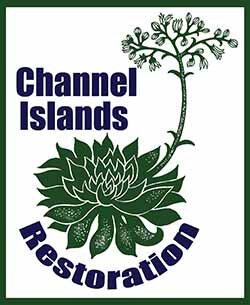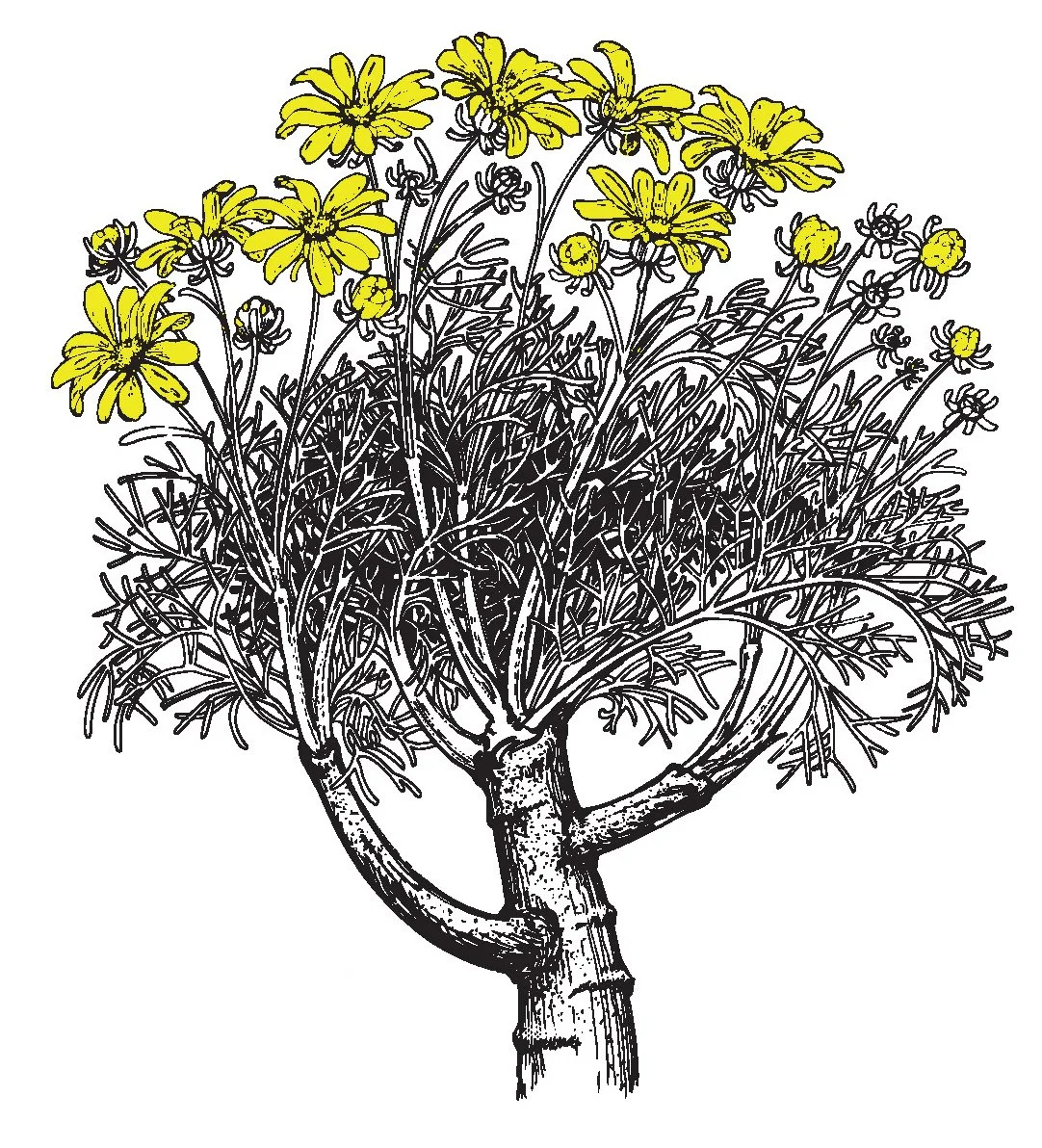CHANNEL ISLANDS RESTORATION
Channel Islands Restoration protects rare and endangered plants and animals by restoring habitat in sensitive and unique natural areas on the California Channel Islands and adjacent mainland. We educate various groups about the value of native habitat and how to protect it. We recruit volunteers and identify and develop public and private funding sources for habitat restoration programs. We create collaborative relationships within the environmental community.
Group of CIR volunteers at the Channel Islands National Park
CIR ECOLOGICAL RESTORATION AND ENHANCEMENT PROGRAMS
CIR has gained broad experience working in multiple habitats from northern Santa Barbara County to as far south as the Ballona Wetlands in Los Angeles. We are recognized by our colleagues, clients, and partner agencies for our thorough work, our professionalism, integrity, our ecosystem knowledge, and commitment to protection of native plants and animals. CIR has worked with more than 10,000 volunteers on many of our projects, including both youth and adults. The most volunteer-intensive programs happened on the Channel Islands, where volunteers worked on daytrips and overnight trips collecting seeds, propagating plants, installing plants, and removing invasive weeds. The vast majority of our donors were introduced to the organization through volunteer experiences.
GOALS
Return to restoring habitat on the Channel Islands.
Continue expansion of this program geographically and into new habitats. Geographical expansion will include expanded work in Los Angeles County (particularly for the U.S. Forest Service) and other counties in the central and southern California region.
Expand restoration into new ecosystems, particularly in deserts and coniferous forests.
Return to providing volunteer trips in Channel Islands National Park.
Grazing at the San Marcos Foothills Preserve
CIR RESEARCH PROGRAMS
CIR research into grassland restoration through prescribed grazing at the San Marcos Foothills Preserve (SMFP) yielded important, positive data on the technique which was lacking in southern California compared to elsewhere in the state. The results of the research became very useful in influencing public policy precisely at the time as significant state funding became available for the use of prescribed grazing as a fire resiliency technique. CIR staff developed best management practices (BMPs) for safely grazing in rangelands, and our staff have participated in meetings with state legislators, grazing vendors and members of the environmental community to present the BMPs to help ensure that grazing is performed in an environmentally safe manner. One amazing side-effect of our research is that in 2018, several months after our first experiments with sheep grazing at the SMFP, the Cave Fire swept through the area driven by high winds. Santa Barbara County Fire Chief Rob Hazzard (who was fighting the fire as the SMFP that day) credits our grazing program for halting the fire and saving the nearby community from “significant structure loss.”
GOALS
Seek more opportunities to include a research component into our restoration work.
Continue research into grassland restoration and fire resiliency utilizing animal grazing. This should include identifying a permeant funding source for the research at the SMFP and focusing the research into the best timing and intensity of grazing.
Utilize graduate student researchers on our restoration projects in cooperation with local universities where feasible.
San Marcos Foothills Preserve
PHILANTHROPY
Our mission includes philanthropic activities that fund open space acquisition and environmental stewardship. In 2021, CIR worked with a coalition of groups to raise an astonishing $18,600,000 in ninety days to buy 101 acres of rare native grassland habitat and open space in Santa Barbara that was just weeks away from being developed with luxury homes. The property has been added to the adjacent San Marcos Foothills Preserve, thereby enlarging the preserve to 301 acres. We previously raised over $600,000 for restoration at the Preserve, and we are preparing to start an endowment to fund ongoing restoration and wildfire resiliency. CIR is preparing to work with Channel Islands National Park on a philanthropic campaign to raise funding for habitat restoration on Eastern Santa Cruz Island. Our goal is to raise several million dollars for an endowment to be used exclusively for restoration on the island and funding to pay for CIR to hold restoration and educational programs on the island.
GOALS
Execute a Partnership Philanthropic Agreement with Channel Islands National Park.
When Goal 1 is achieved, reach out to funders in the Los Angeles market to help fund the program to avoid competing with our own donors for donations.
Assess the feasibility of creating a Restoration Endowment
Wetland Plants growing in our nursery
STEWARDSHIP
In addition to the SMFP, CIR has provided stewardship services on two other properties owned by the county Parks Division. These are Hammond’s Meadow (Shalawa) in Montecito and the Greenwell Preserve in Summerland. The latter is managed by a volunteer committee consisting of several nonprofit organizations, including CIR, and CIR maintains and uses a small nursery and office/storage space at the Preserve. Although the Preserve has a small budget to pay for some of our maintenance services, CIR charges a break-even rate, and often works on a pro bono basis to support the entity.
Over the last 15 years, several CIR Board members have advocated for CIR owning and/or managing property to accomplish several goals. These include providing CIR with unfettered access to natural areas that need protection and/or restoration. We also considered finding property where Joshua tree grows at a certain elevation, but not on higher topography on the same property. This could present ideal conditions to establish upslope migration of Joshua tree which is a predicted adaptation that the plants will need to survive in a warming climate.
One opportunity has come up in recent years. A philanthropist has offered to give us several hundred acres of land he owns near Yucca Valley near Joshua Tree National Park and/or give CIR the opportunity to steward the land. The land includes Joshua tree at lower elevations and has a mountainous terrain. The property is subjected to trespassing by people using off-road vehicles, building of an illegal campground and graffiti tagging. The owner would like to prevent or limit the trespassing, and CIR is exploring various ways to accomplish this.
GOALS
Continue to gain experience stewarding parcels in the San Marcos Foothills Preserve on an ongoing basis.
Continue exploring the feasibility of becoming involved with the property in Yucca Valley as well as other locations.
Group of students on Santa Cruz Islands
ENVIRONMENTAL EDUCATION – YOUTH
CIR has received grant funding from several foundations and government programs to provide service-learning trips for young people on the Channel Islands. Since 2005, we have provided field trips to the islands for 2505 youth that were accompanied by 408 adults. In addition to our youth education program, CIR has provided natural history education trips for adults to many iconic parks and national forests and to the Channel Islands. Although many nonprofits provide outdoor education, CIR has a unique program combining a service-learning component with the outdoor experience. Under a possibly forthcoming philanthropy agreement with the Channel Islands National Park, CIR looks forward to resuming service-learning trips to Channel Islands National Park, which is a unique program. Although such programs must include the cost of boat transportation, the boat trip is an extremely valuable experience for young people, especially ones from underserved communities. CIR can also provide service-learning experiences for young people on the mainland at locations like the San Marcos Foothills Preserve.
GOALS
Seek funding for the expansion of our service learning trips to Santa Cruz Island.
Create permanent partnerships with schools with a high percentage of underserved students to participate in the program.
Develop cooperative agreements with public and private agencies in pursuit of expanding service-learning trips to new locations.
Group tour of the Channel Islands National Park
ENVIRONMENTAL EDUCATION – ADULTS
CIR provides an annual educational trip to Santa Rosa Island for adults, and we have provided annual natural history educational trips to Death Valley National Park and the White Mountains of Eastern California on a regular basis for many years until the onset of the pandemic. Although complicated to organize, these trips are very popular and regularly sell out. CIR provides at least eight webinars a year, that have proven to be very popular, and we produced a film on the geology of Arroyo Burro Beach featuring Susie Bartz. Additionally, CIR in implementing a docent program at the San Marcos Foothills Preserve. Volunteer docents provide education to visitors to the Preserve regarding natural history topics, Chumash heritage, and minimizing disruption to wildlife while visiting.
GOALS
Continue educational trips to the Channel Islands in support of funding restoration projects in Channel Islands National Park.
Expand day trips to popular mainland locations.
Continue providing trips to Death Valley and the White Mountains. Offer trips to other locations including the desert and other island and coastal locations.
Increase educational outreach by creating additional educational videos and a podcast.
WHY SUPPORT CHANNEL ISLANDS RESTORATION
In this time when government funding for the environment has all but disappeared, Channel Islands Restoration urgently relies on the support of members to continue our mission to restore habitat and promote environmental education. For less than
$5 a month, you can become a member of Channel Islands Restoration and support our vital work.
Until now, CIR has been able to do our work with the support of less than 200 individual donors, but many of the agencies we depend on for funding are having their budgets slashed. Right now, CIR needs to rely on individuals like you to keep our habitat healthy and introduce students to nature while providing educational opportunities for adults.
Your contribution will help protect the habitat of native animals and plants on the mainland and the Channel Islands, including the island fox, island spotted skunk, island night lizard, and many more species that occur only along the Central Coast. Your gift is also vital to removing invasive plant species like yellow star thistle, giant reed, ice plant, and other non-native species that can damage sensitive ecosystems.
Since 2002, we've worked on over 100 project sites throughout the Channel Islands and our local mainland with the help of over 10,000 individual volunteers (nearly 3,400 of which are kids from schools who would not otherwise have access to field trips or environmental education). With so much support from our community, we can stretch your dollar to the farthest possible extent.
In addition to supporting habitat restoration, your donation will give you access to the tiers of donor benefits, including invitations to private events, merchandise, virtual talks, and our sincere gratitude.


